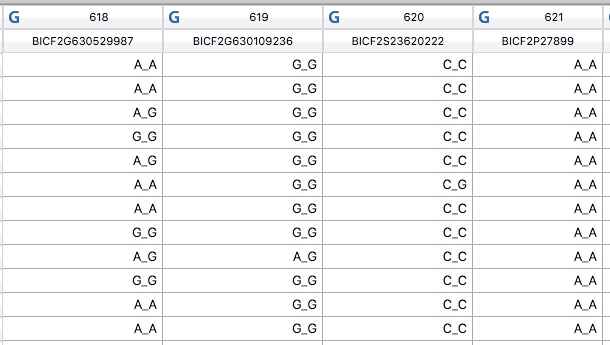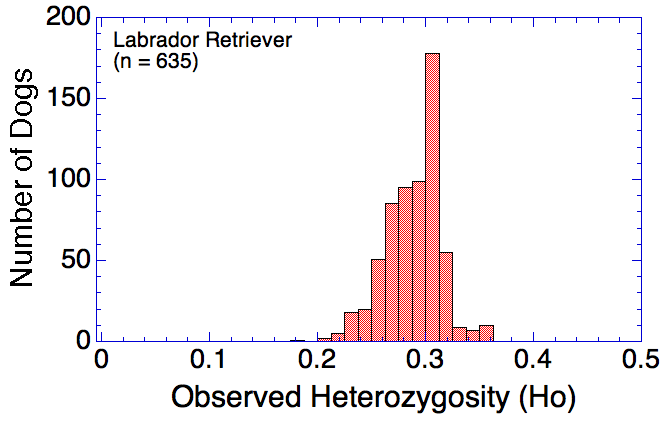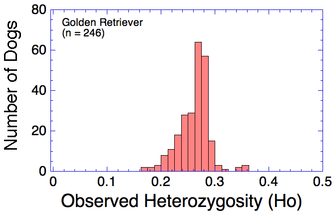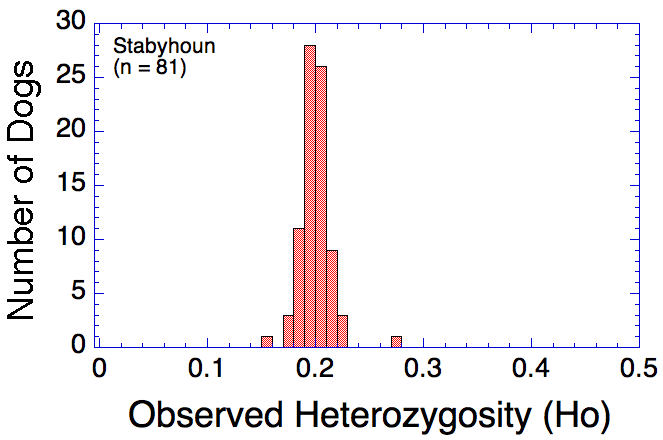Heterozygosity (Ho)
For the first marker (column 618), you can see that some dogs are homozygous for that SNP (either AA or GG), while some are heterozygous (AG). For the next two SNPs, all but one of the dogs are homozygous for the same nucleotides, and all of the dogs are homozygous at the last marker.
We can determine the degree of heterozygosity of each of these markers by tallying up the different combinations of alleles for each marker in each of the dogs in our sample. From these information, we can then compute heterozygosity, which is simply the fraction of all of the marker that were heterozygous, averaged over all of the dogs. The higher the heterozygosity, the greater the genetic diversity. This is usually referred to as "observed heterozygosity" (Ho).
ICB's online courses
***************************************
Visit our Facebook Groups
ICB Institute of Canine Biology
...the latest canine news and research
ICB Breeding for the Future
...the science of animal breeding






